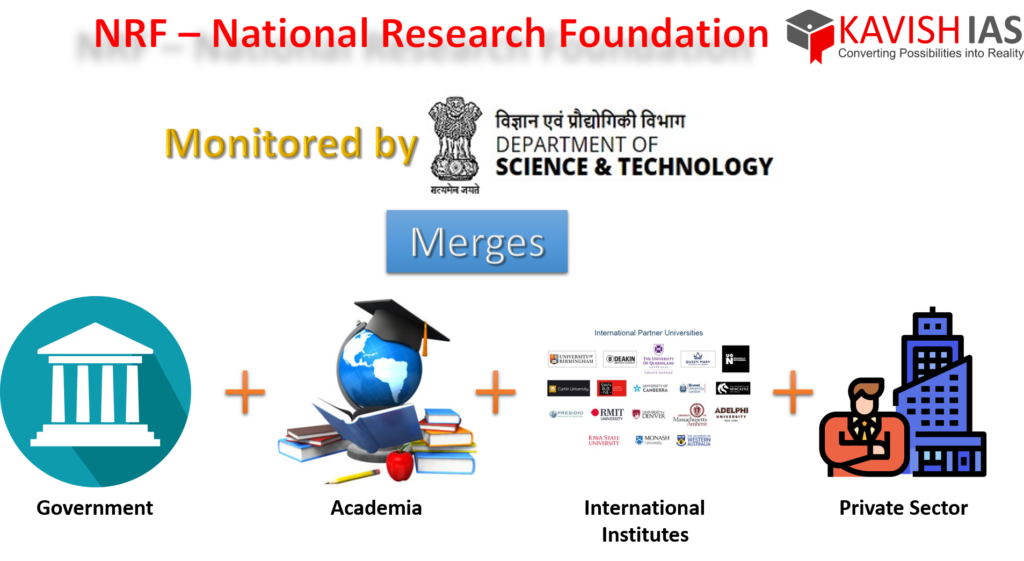GS PAPER-3 SCIENCE & TECHNOLOGY
NRF, i.e. National Research Foundation has its implications in the long term development of our country, be it defense, agroeconomy, space research, health or any other aspect. As we all know, that India is advancing in most of the crucial fields, be it efficient agriculture, communication and governance, health, arms and armory, or even reaching the space.

But what is the core element that acts in the background of all these developments?
It’s the knowledge of science and its application. That means, if we want to grow as a superpower, we must promote and practice science and technology for our inclusive development. Now, where does India stand when it comes to RESEARCH AND DEVELOPMENT?
India has always been attentive towards Research & Development. With organizations like DST, DBT, DRDO, CSIR, DAE NITI AAYOG etc. we have come a long way in this field. But, where do we stand globally?
When compared other nations like USA, China, Israel or Korea, India ranks below them, be it in terms of contributing from its GDP, producing research scholars or filing patents. This shows, we are still not able to cope with certain intra- institutional complications, in order to shoot as a superpower.

Now what are the reason behind this problem?
- Complexity of application
- Preference for established organization
- Lack of regular funding, are a few of the issues that need to be addressed. To address these problems, the union ministry has come with a new solution i.e. NRF.
So what is NRF? It stands for National Research Foundation which was postulated by National Education Policy (NEP). Prime Minister would be the President, and Education minister, Shri Dharmendra Pradhan along with minister of Science & Technology, Dr. Jitendra Singh would be the vice presidents.
Coming to the initial investments towards NRF, the central government plans to contribute a total of ₹50,000 crore from 2023-28, out of which ₹10,000 crore will be donated by GoI, ₹36,000 crore from private sector and ₹ 4,000 crore will be obtained from subsuming SERB (SCIENCE AND ENGINEERING RESEARCH BOARD).
NRF will be regulated by DST with goals of merging
- Government,
- Academia
- International Institutes
- Private Sector

This wholesome collaboration would enhance our potential to boost Research & Development. Now, we need to understand, that in spite of having so many Science & Technology promoting organizations, how can NRF help us?
Although, India’s investment toward R&D has increased in terms of capital, it is still contributes only 0.6 to 0.7 % of it GDP, whereas, nations like US, are contributing more that 2% towards research. NRF is going to help us achieve this milestone and promote interdisciplinary research that could be valuable for our growth. With such steps, we would be able to evolve as an inclusive superpower.


